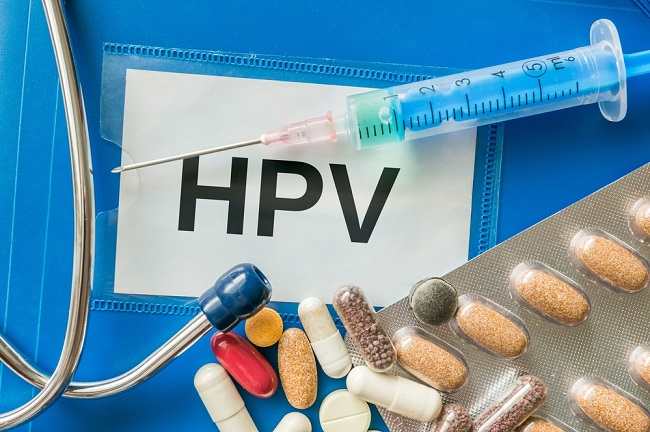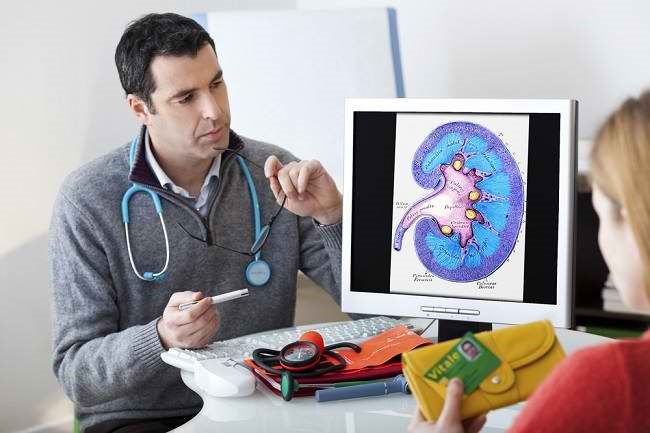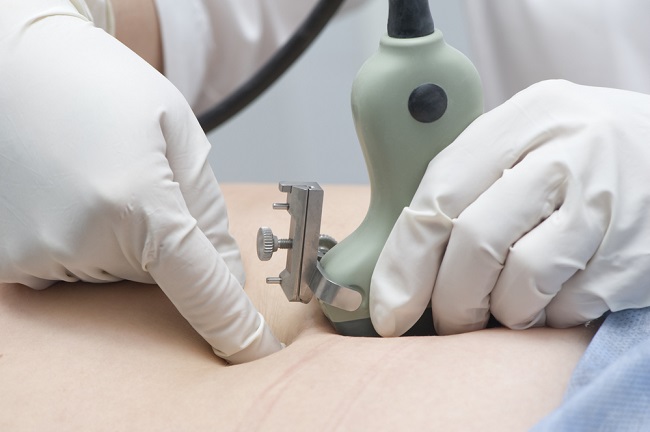Embryo blastocyst culture and transfer is a procedure for maturation and transfer of embryos into the uterus. This procedure is one of the stages in a series of processes in vitro fertilization better known as IVF.
IVF is a procedure performed to assist the process of pregnancy in couples who are difficult to have offspring due to disorders of the reproductive system (infertility). In IVF procedure, mature eggs are taken from the ovaries, then undergo the process of fertilization by sperm outside the body.

The IVF procedure is a fairly complex procedure and consists of several stages. One of the stages in the IVF procedure is the culture and transfer of the blastocyst of the embryo. This stage is the final stage of the IVF process. At the blastocyst culture stage, the embryo that has been formed after fertilization will undergo a maturation process until it reaches the blastocyst stage, which is the embryonic development stage 5-6 days after fertilization.
The embryo that has reached the blastocyst stage already has two distinct parts, namely the inner cell which will develop into the fetus, and the outer cell or trophoblast which will later become the placenta. However, not all embryos can develop to the blastocyst stage in the laboratory. This condition depends on the quality of the sperm and egg.
After going through the blastocyst culture process, the mature (multicellular) embryo will be put back into the uterus to be able to develop. This stage is known as the embryonic blastocyst transfer stage.
Indications for Embryo Blastosis Culture and Transfer
As part of the IVF procedure, embryonic blastocyst culture and transfer can be performed on female patients who have not had children for at least 2 years, or who have undergone fertility-enhancing medication therapy but have had no results. This procedure is best performed on women under the age of 40. Infertility (infertility) can be caused by the following conditions:
- The fallopian tubes are damaged or blocked.
- Endometriosis.
- The function of the ovaries (ovarian) decreases.
- Disorders of ovulation or egg maturation.
- myoma.
- Have you ever done sterilization?
- Impaired form, function, and production of sperm count.
- Have or are currently undergoing radiotherapy or chemotherapy.
- Cause unknown
IVF procedures are also performed if the partner is at high risk of passing a genetic disease to the baby. Through laboratory analysis, several embryos will be tested and examined for genetic diseases.
Before Embryo Blastosis Culture and Transfer
The patient will undergo a medical history examination and the doctor will explain the procedure to be carried out, as well as the risks that the patient may experience. Next, the doctor will check your vital signs and physical examination. After going through the physical examination stage, each patient who will undergo IVF procedure will perform several follow-up examinations, including:
- Hormone test. This test is carried out by measuring the level of follicle-stimulating hormone (FSH), the hormone estrogen, and the hormone anti-Müllerian (AMH) in the blood to determine the quantity and quality of eggs.
- Examination of the uterine cavity. Examination can be done in 2 ways, namely sonohysterography and hysteroscopy. Sonohysterography is done by injecting a special fluid into the uterus and with the help of an ultrasound machine it will produce images of the condition of the uterine cavity. Meanwhile, hysteroscopy is performed by inserting an endoscope through the vagina into the uterus.
- Cement analysis. The partner or husband will undergo an analysis process with sperm samples in the laboratory to determine the quantity and quality of sperm.
- Screening for sexually transmitted infections. The doctor will check for the possibility that your partner has a sexually transmitted infection, such as HIV.
- Artificial embryo transfer experiment. The doctor will perform a mock embryo transfer to determine the technique and depth of the uterine cavity that will be used to place the embryo in the uterus.
After the doctor confirms the condition of the patient and the patient's eggs, the doctor will start the IVF procedure. Before entering the embryonic blastocyst culture and transfer stage, the patient will go through several initial stages in the IVF procedure, namely:
- Stage of stimulation or induction of ovulation. At this stage, the doctor will give several types of drugs to increase the number of eggs, such as ovarian stimulant drugs to increase the number of eggs produced, and drugs to help the egg maturation process. The patient will also undergo a transvaginal ultrasound to monitor the development of the egg. Blood tests will also be done to check the effect of the drug on increasing the number of eggs.
- The stage of egg retrieval or follicular aspiration. This stage is done through a minor surgical procedure. The doctor will insert an ultrasound device through the vagina to identify the follicles. Next, a small needle is inserted through the vagina, then directed into the ovary and into the follicle. The egg in the follicle is taken through a needle connected to a suction device.
- Fertilization (fertilization). Fertilization can be done in two ways, namely insemination and fertilization intracytoplasmic sperm injection (ICSI). Insemination is done by uniting sperm from a partner and eggs that have been taken in a special dish. If the insemination technique fails to produce an embryo, the doctor will use the ICSI technique. ICSI is done by injecting healthy sperm into mature eggs directly.
Embryo Blastosis Culture and Transfer Procedures
After going through the stages of stimulation, egg retrieval, and fertilization, the embryo will enter the blastocyst culture stage. At this stage, eggs that have gone through the fertilization process will be stored in a special place in the laboratory. The doctor will monitor regularly to ensure that the egg can develop normally and form an embryo. The cells in the embryo are capable of actively dividing and after a few days, the embryo is said to be mature and ready to be put back into the uterus.
If the doctor has confirmed that the embryo has matured, the patient will then undergo a blastocyst embryo transfer procedure. The steps are as follows:
- The patient will lie on the examination table with the legs open and supported.
- The doctor will inject a sedative to keep the patient relaxed during the transfer procedure.
- The doctor will insert a long, thin, elastic tube (catheter) through the vagina, which is then directed toward the cervix and into the uterus. The patient will feel uncomfortable when the catheter is inserted.
- The catheter is connected to an injection containing one or more embryos that have been given a special fluid to keep them protected.
- The doctor will slowly inject the embryo through a catheter into the uterus.
- After completing the blastocyst embryo transfer, the doctor will withdraw the catheter from the patient's vagina.
After Embryo Blastosis Culture and Transfer
After undergoing embryonic blastocyst transfer, the patient is advised to remain lying down for a few minutes in the recovery room. After the doctor makes sure the patient's condition is stable, the doctor will usually allow the patient to go home without having to undergo hospitalization. The patient can return to normal activities, but the doctor will give some instructions that the patient can do at home to maintain the growth of the embryo and prevent the risk of miscarriage. Among others are:
- Get enough sleep and rest when you feel tired.
- Perform light movements, such as walking, to increase blood flow to the uterus.
- Eat nutritious food.
- Take pills or use progesterone injections for 8-10 weeks after embryonic blastocyst transfer. The hormone progesterone is a hormone that is actually produced naturally by the ovaries to help thicken the uterine lining and make it easier for the embryo to attach to the uterine wall.
- Take folic acid supplements regularly to reduce the risk of birth defects.
- Avoid smoking and alcohol consumption.
- Avoid excessive stress because it can indirectly affect the development of the embryo.
- Check with the doctor regularly to monitor the development of the embryo.
Results of Embryo Blastosis Culture and Transfer
About 12-24 days after the embryo transfer process, the doctor will test a blood sample to check the development of the embryo. The results of embryo transfer are influenced by several factors, namely:
- Age.
- History of reproductive organ disorders.
- Embryo condition.
- Causes of infertility.
- Lifestyle
There are two possible outcomes of embryo transfer, including:
- Positive pregnant. If the embryo attaches perfectly to the uterine wall and develops normally. The patient will have regular check-ups with the obstetrician for further examination.
- Negative pregnant. If the embryo does not attach to the uterine wall and fails to develop. This condition can be detected when the patient returns to his menstrual cycle. The doctor will instruct the patient to stop taking the hormone progesterone and advise the patient to try IVF again.
Risks of Embryo Blastosis Culture and Transfer
Embryo blastocyst culture and transfer are safe procedures to perform. The side effects that are felt are generally mild and rarely occur. Among others are:
- Stomach cramps.
- Constipation.
- vaginal discharge.
- Breast pain due to high estrogen levels
Although quite rare, embryonic blastocyst culture and transfer procedures can also cause complications, including:
- Pregnant with twins. Occurs when more than one embryo is injected into the uterus. Having twins is at risk of causing premature birth or low birth weight.
- Ectopic pregnancy or pregnancy outside the womb. This type of pregnancy cannot be continued because it can harm the mother.
- OHSS (ovarian hyperstimulation syndrome), i.e. swelling and pain in the ovaries.
- Birth defects. The older the patient, the higher the risk of pregnancy. One of the risks is the baby will have birth defects.
- Miscarriage. The risk of miscarriage will increase with increasing age of pregnant women.
Immediately contact a doctor or visit the nearest hospital if you experience the following conditions:
- Fever.
- Pelvic pain.
- Heavy bleeding from the vagina.
- Spots of blood in the urine.









